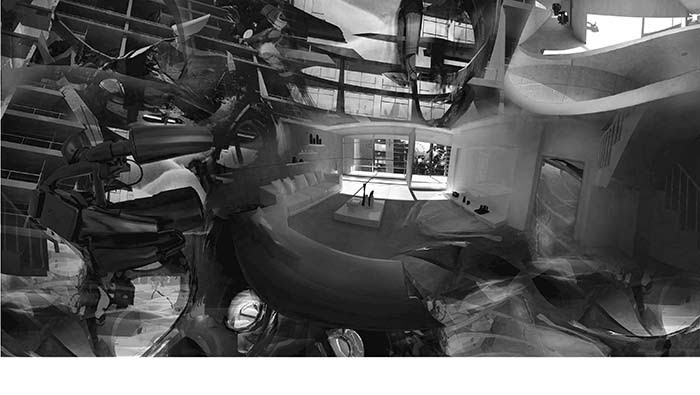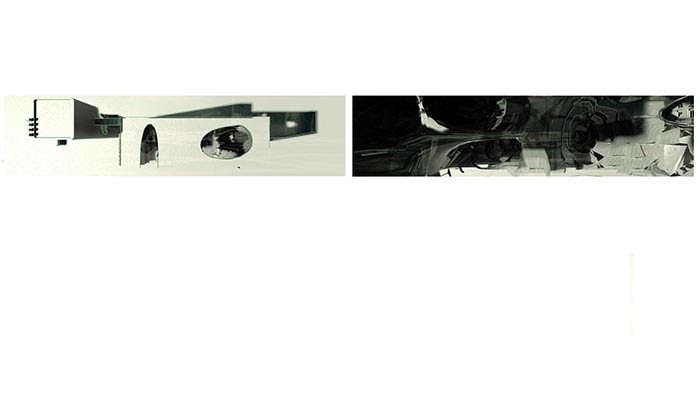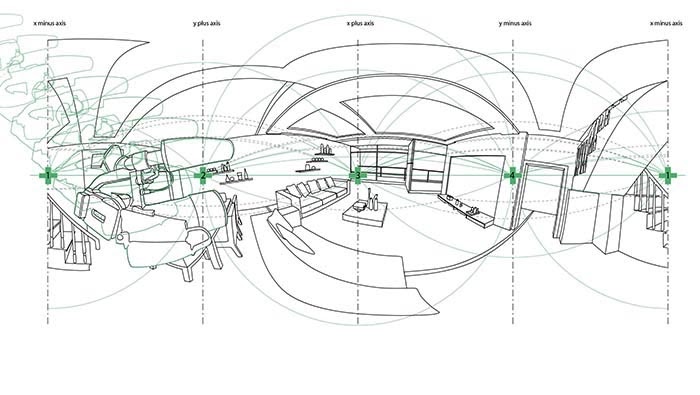Shinkenchiku Design competition entry 2009, merit prize, collaboration between Eva and Tobias Klein
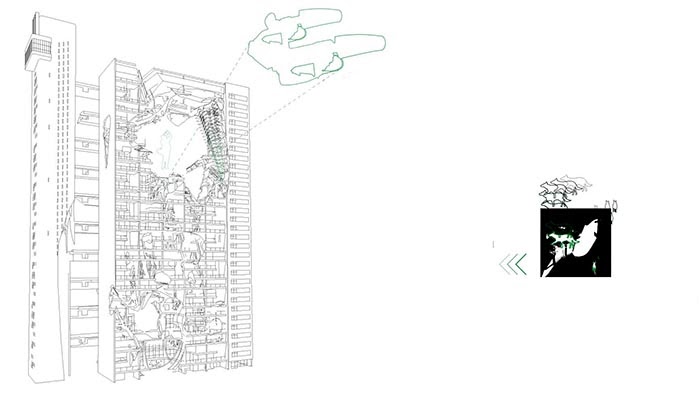
We do not believe in static renaissance modes of representation. We understand plans and sections neither as a design integral document nor as a means of architectural construction. We embrace a perceptive architecture that has evolved from a narrated background and is only able to be drawn and understood in a perspective projection. We think of projections and projection planes that are capable to embody a narrative within architecture. We are interested in creating a dialogue within projection, representation and design so that the architectural representation becomes architecture and the narrative becomes projection.
The architecture we project in this scheme is related to the movie Stalker by Andrei Tarkovsky, in that he was able to transcend a Deleuzian crystal image idea within a narrative embodiment allowing for the establishment of the zone. The zone for us is an n-dimensional space embodied within architecture that acts as a 3 dimensional projection space for a 4 dimensional projection.
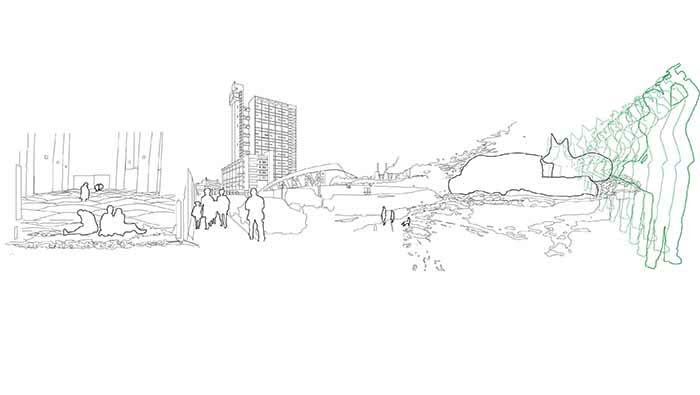
The site in this scenario is the famous Trellick Tower in London by Erno Goldfinger. At the time it was conceptualised as a vertical city allowing the inhabitants to form an urban community but similar to the novel High-Rise by J.G. Ballard, soon a dystopian image emerged from the planned residential order. The narrative of a distorted perceptive architecture is informed and informs the scheme and constantly shifts the viewpoint from an immersed spectator to an external visitor. This creates an architecture from the within utilising the cinematic experience of the ubiquity of n-dimensional space, embodying the character, the narrative within the formal expression.
Narrating Embodiment is a project that explores the boundary of experimental architecture, attempting to design and understand a cinematic zone-like space – a chthonic landscape that allows the architecture to be projected and fused within a site specific narrative. The projects transcends through functionalism and rational static description; merging instead perception with story and time with projection.
